I remember picking paint for our RV-10. Heck, I remember picking paint for our Kitfox IV back in 1993. We worked with sleeves of paint samples, small cardboard squares of shiny colors. We took them out in the glare of the bright noon sunshine. We looked at them under the flourescents in the hangar. We argued (come on, this is a husband/wife team, you know we did). We really did sleep on it more than one or two nights. And both times we got it wrong.
My husband chose to paint the Kitfox himself, and I remember watching him from the other side of the plastic sheet paint-box he’d constructed in one half of our two-car garage. All I could think was, “Wow, Daytona White sure comes out of the atomizer looking yellow when it is wet!”
Funny that. It looks yellow when it’s dry, too. In fact, the airplane’s nickname is Little Bird, because, well, it is very canary-like. Turns out Daytona White fades to a pale yellow after 22 years. Go figure.
As you might imagine we tried harder to get the color we wanted with the RV-10. We even took the airplane to a very reputable paint shop. Understand, I do not blame the paint shop for the color of my airplane. No, only the pickers, my husband and I, can take responsibility for that. I wanted metallic brown, but the cost to do that over the expanse of fuselage I’d imagined was, well, let’s just say too much. For us. So we went with what we thought was a shiny brown. Except it came out wet, looking a lot more orange than brown. Six years later it’s still pretty burnt sienna. I’ve grown to like it.
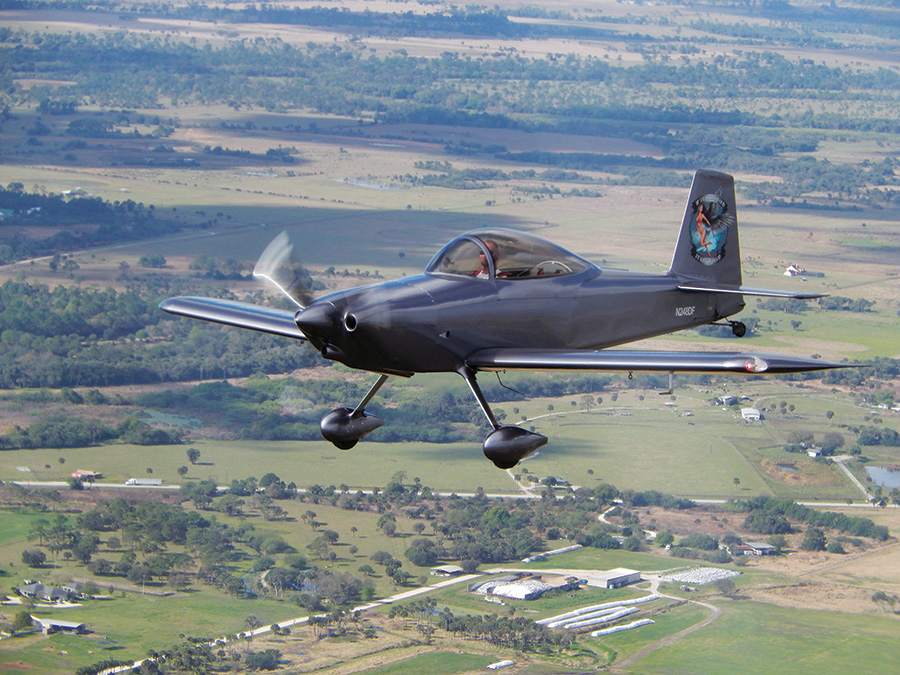
You might think that the vinyl wrap is the graphic you see on the tail, but closer inspection reveals that the entire silver base is vinyl wrap on Scott Farnsworth’s RV-8.
Better Ideas
There are better ways to get good color matching. You can find the color on another airplane and then find the builder and get the same paint he’s got (good luck, but your paint shop may be a huge help here). You can actually buy some of the paint and do samples if you are painting yourself (expensive).
Scott Farnsworth, principal of AircraftWraps (www.aircraftwraps.com) at Florida’s North Palm Beach County Airport, decided to skip the paint completely and go with what he describes as a vinyl film of 2.5 to 4 mils in thickness, designed to be applied to the bare aluminum of his RV. “Color matching is much easier because the films give you computer exactness there,” explains Farnsworth, who has wrapped his own RV-8 more than once at this point, perfecting his process. He estimates that the cost of wrapping an RV-8 runs $5,000 for one color, and $6,700 for two. Larger aircraft and more complex designs cost more.
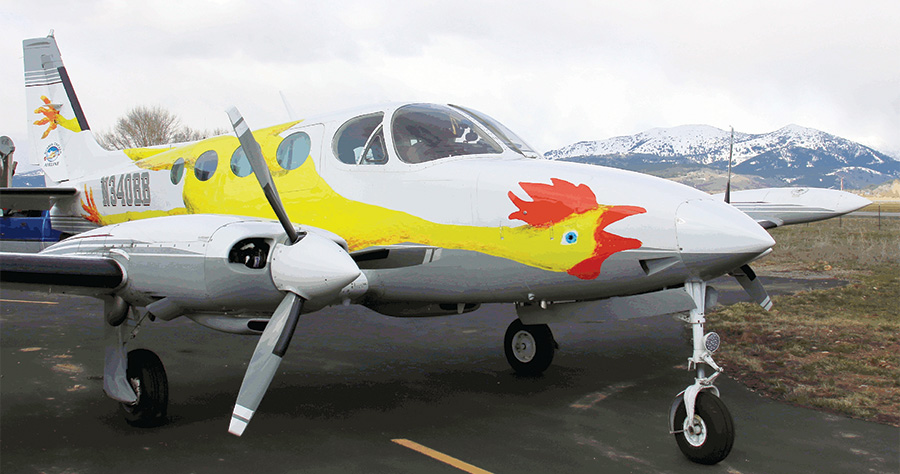
Dr. Brent Blue’s Cessna 340 is adorned with a vinyl rubber chicken to honor the AirVenture bash he holds each year. (Photo by Geremy Kornreich)
No toxic priming or etching, and relatively easy removal are two definite benefits of film over paint. The two-week installation Farnsworth offers, however, grabs a lot of people. It is a whole lot less time than the typical paint shop’s one- to two-month turnaround. Farnsworth maintains that his RV-8 was ready to fly once he was done wrapping it.
The downside? Wraps don’t last as long as paint, for starters. 3M will only warrant its films for 1.5 to 2.5 years, though engineers at 3M admit that properly applied and cared for wraps (say, on a hangared airplane) will last much longer.
Is This New?
Complete aircraft wraps with aviation specific films are not new. For nearly a decade 3M has manufactured two products designed to be applied to aircraft, VS7704 polyester aircraft film and A7322 vinyl film. The polyester is a more durable product, but not meant to conform around rivets, which means that if you’ve got rivet heads, you’ll be cutting each one out to allow your film to lay flat. That said, it is ideal for smooth, composite surfaces, and you can get it in the reflective metallics that are so expensive in paint. The A7322 vinyl is designed to form over and around rivets with proper application, which includes heat-treating the product and rolling or brushing it around each rivet to remove any air bubbles. It is an exacting process, but the result is drop-dead gorgeous when applied properly.
These films weigh in the area of 10 grams per square foot, plus ink and clearcoat (the polyester films weigh a little more). This is on par with what a typical paint application on a light aircraft will weigh. If you apply it over a base coat of paint and primer, then your film-wrapped airplane is likely to weigh more than if you’d just added decorative paint trim.
It’s no secret that some of the most elaborate “paint jobs” seen on aircraft at fly-in’s have actually been printed vinyl or polyester 3M film wraps. The Internet is riddled with YouTube videos of applicators sticking pandas on the side of FedEx jets, or even wrapping complete aircraft in time-lapse, ostensibly completing the project in a matter of a few days.
A team of good applicators can probably do that, but that doesn’t mean you should grab your computer and browse over to 3Mgraphics.com to get yourself a couple of rolls to apply yourself. There’s more to it than having good press-and-stick skills. 3M is going to want to see your design and counsel you. They typically work with a designated engineering representative at the printer and application site to ensure the product will be both manufactured and applied properly. An aircraft’s surface area must be properly prepared before the product will adhere properly, and applicators must be calculating in where the lapping and seams lie on the installation.
Farnsworth will tell you point-blank that what makes his wraps work is the installation, a proprietary process that he will not discuss.
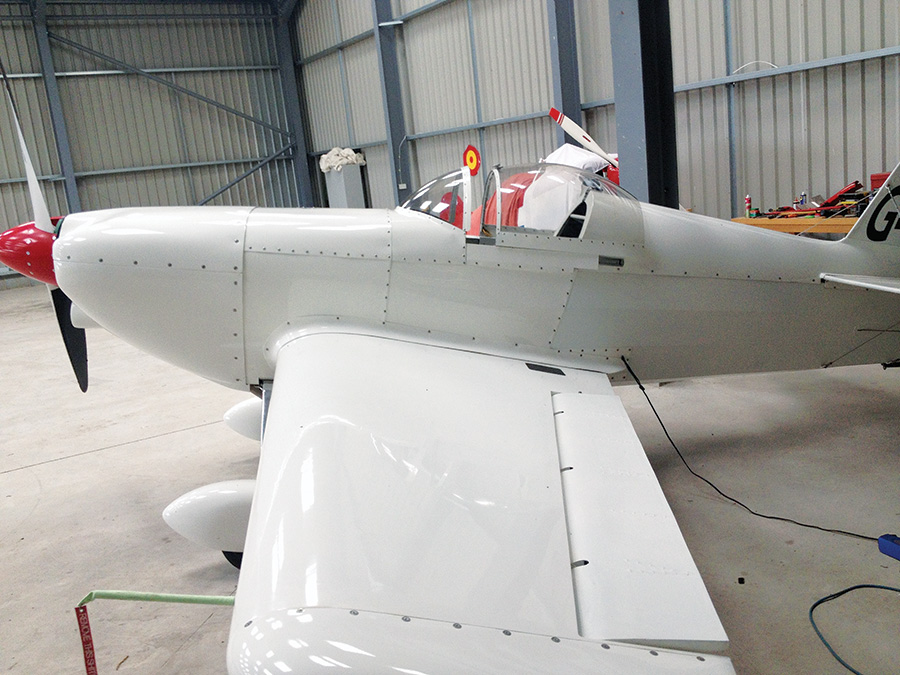
Before and after: this layered application took a couple days to finish. The paint version would have had the aircraft down for weeks.
Dissent is Rampant
Though these products have been around for quite a while, not everyone agrees with Farnsworth about wrapping unpainted aircraft. The dissent within the aircraft paint and decaling industry is confusing to consumers, as evidenced by the many threads running through forums such as vansairforce.net and homebuiltaircraft.com.
“None of these products are designed to cover leading edges of aircraft or areas where potentially corrosive fluids could coat it,” said Rich Thompson, owner of AdGraphics, a Pompano Beach-based sign and graphics business that has used the 3M products since 1992. Thompson is skeptical about using the product on bare metal, even if 3M designed it that way. “These films are not paint replacements,” he stated right out. “We create the decoration that makes an aircraft stand out for its owner,” he explained.
In Ocala, Florida, Paul Howes, principal at Moody Aero Graphics, another source of complex designs for aircraft films, agrees with Thompson. “You could conceivably polish your bare metal airplane and then apply a wrap onto that, but really, polishing is a lot of work. If you are thinking about wrapping your airplane to save money and save a step, it just doesn’t work,” Howes said. He routinely has to knock fine layers of aluminum oxide off of the aluminum roadsigns he services with the same films. “And the film stops adhering when that aluminum oxide forms,” he explained. While corrosion is rarely structural on a road sign, it can cause real problems on an airplane. Even 3M engineers will admit that in some applications with their metallic films, they have found corrosion caused by the proximity of dissimilar metals.
If you try to protect your bare metal with a zinc chromate primer, the wrap won’t stick to it. “As much as we’d love to wrap bare airplanes, it is not practical to wrap without a base coat of paint or polish on a metal airplane,” Howes explained. A partial aircraft wrap from Moody AeroGraphics can run around $3,500. He’ll do full wraps as long as the customer understands the product, he said.
“Wraps such as the 3M films are embellishments that can turn an aircraft into a canvas; but they are not designed to be permanent installations for the most part, although a hangared aircraft with a UV clearcoat over the printing on the wrap could conceivably see the color last a good, long time,” he said. How long? Well, that depends on how much rain you fly through, sun exposure, and whether FOD and corrosive exhaust and oil deteriorate the film or even perforate it.
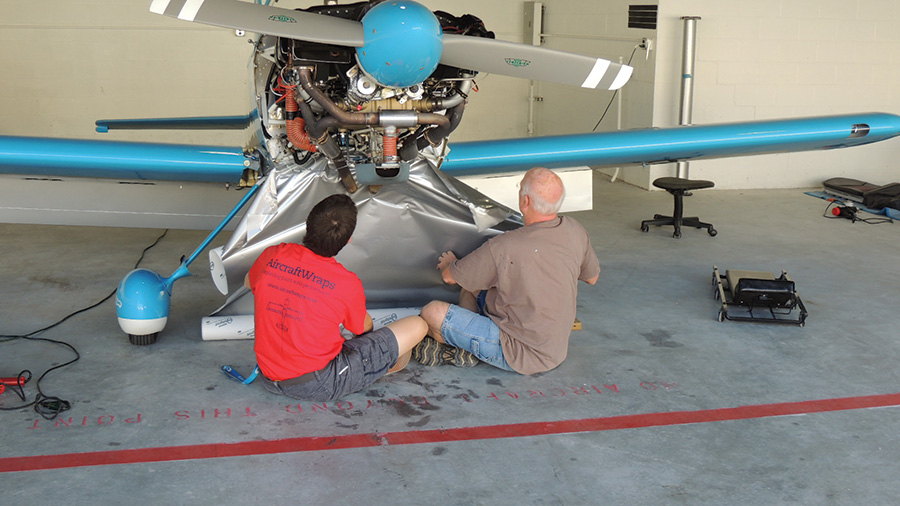
The AircraftWraps application process requires considerable skill. Airplanes have curves in some of the most challenging places.
In the Eye of the Beholder
Muscle cars and sexy aircraft; come on, you know you love wearing them both. And don’t fool yourself, you wear these toys, and you want to look good. Most homebuilders are thinking about style as much as protection when they consider how they are going to cover their works of art before flight.
Is vinyl or polyester film up to the task of protecting your aircraft skin? Honestly? That depends on the materials you’ve used in construction, and the prep you have done to your exterior. Oh, and your wallet may play a part in the decision. (But if it does, please, think long-term.)
It is a wild, interesting world out there, and you really can have any exterior scheme you desire with a little work. Depending on your skill set and how complicated your design, you may not, however, be able to apply it yourself. Our best advice is to do your research.

AircraftWraps’ RV-8 after a two color wrap is applied. The finished product is just as luminous as paint, though probably not as durable.
Burnt sienna and all, I do like my aircraft’s paint scheme. It is conservative, but visible, with just a little sparkle. And I thought it was personal, until I saw a picture of it online someplace where I had not posted it. Someone had snapped an image of it sitting on the ramp several years ago and uploaded it to a very public place. It startled me to find it there, and made me realize how public a paint scheme can be. Consider that before you use your wife or daughter as nose art.
At this point, it seems as if the bulk of aircraft wraps are done for promotion; yes, advertising. A company wants its aircraft to match the fleet of vehicles it has on the road. It wants to be able to advertise its products on a giant moving billboard (the aircraft). That may change if the durability of the wraps on an aircraft application can be proven with more than just anecdotal evidence. The good news? Every installation brings us closer to knowing.

![]()
Amy Laboda has taught students how to fly in California, Texas, New York and Florida. She’s towed gliders, flown ultralights, wrestled with aerobatics and even dabbled in skydiving. She holds an Airline Transport Pilot rating, multi-engine and single-engine flight instructor ratings, as well as glider and rotorcraft (gyroplane) ratings. She’s helped with the build up of her Kitfox IV and RV-10.

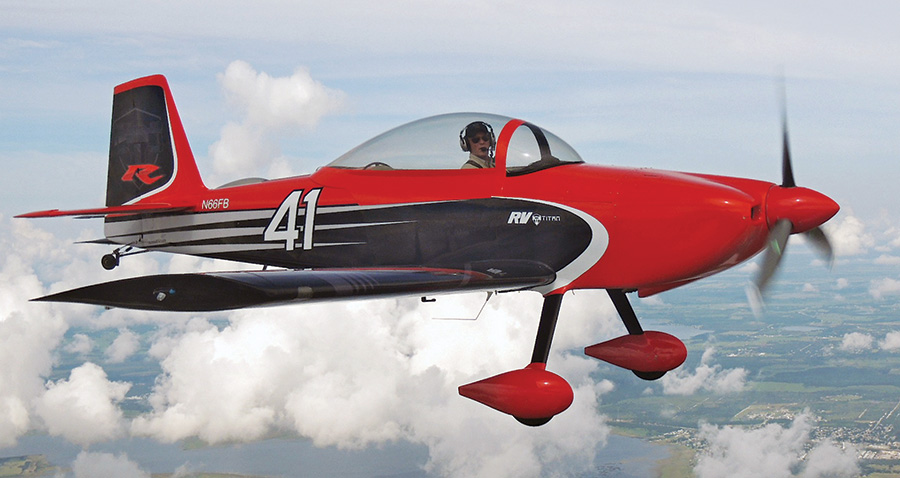

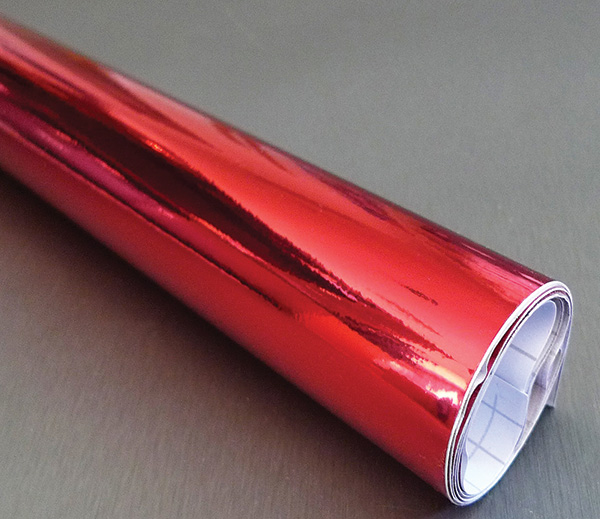

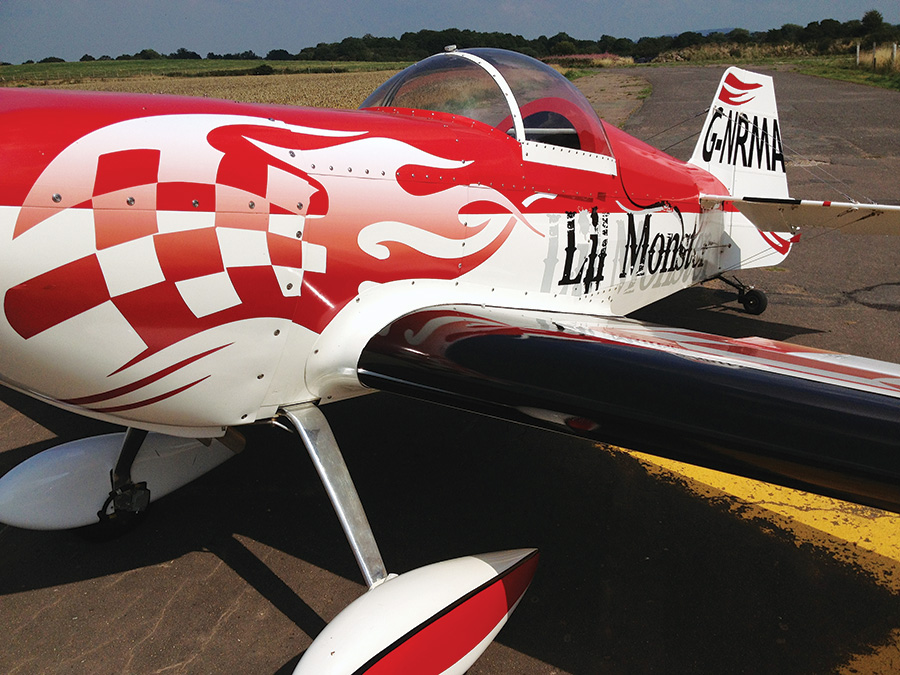


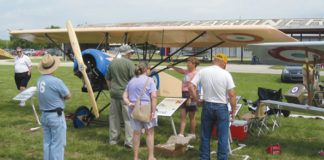
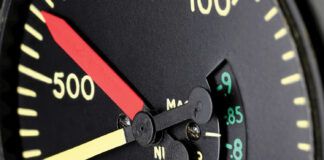
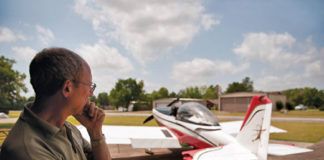
Dear Amy Laboda,
My name is Aziz and study at the university of Amsterdam HvA.
At the moment I am doing my thesis about Wrapping vs Spray painting. Your article is very interesting! the reason I am emailing you is that if you could share the documents /websites where you found all this information!
I hope you can help me!
hope to hear soon from you.
Regards,
Aziz bchiri
can you wrap a plane with a jet engine